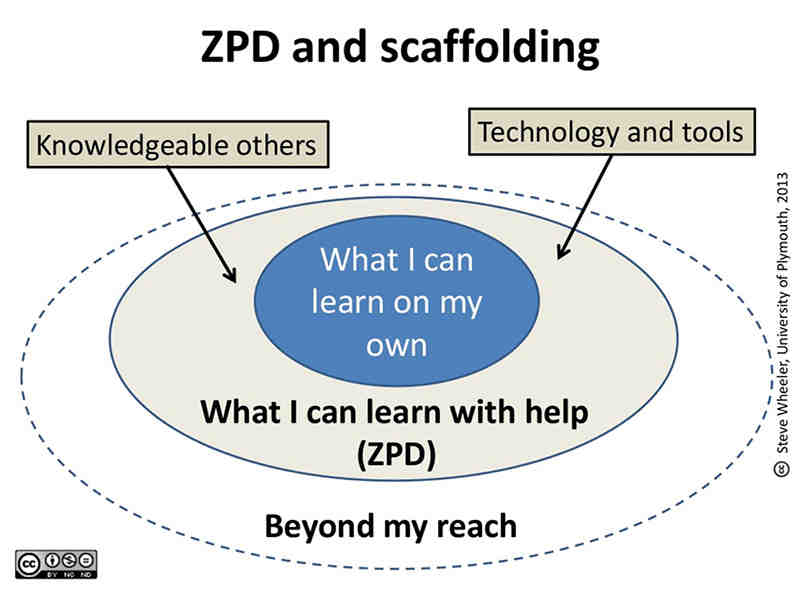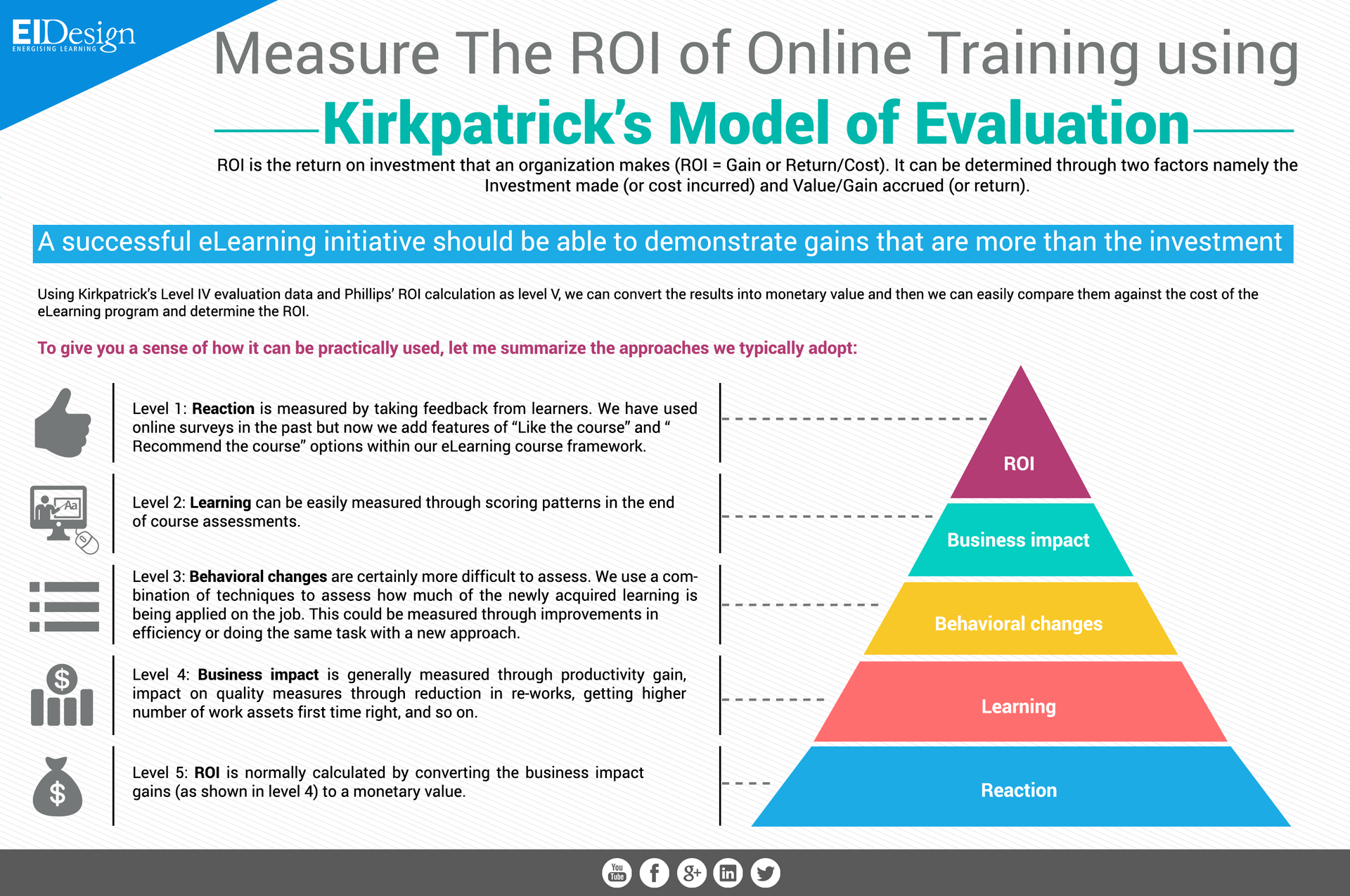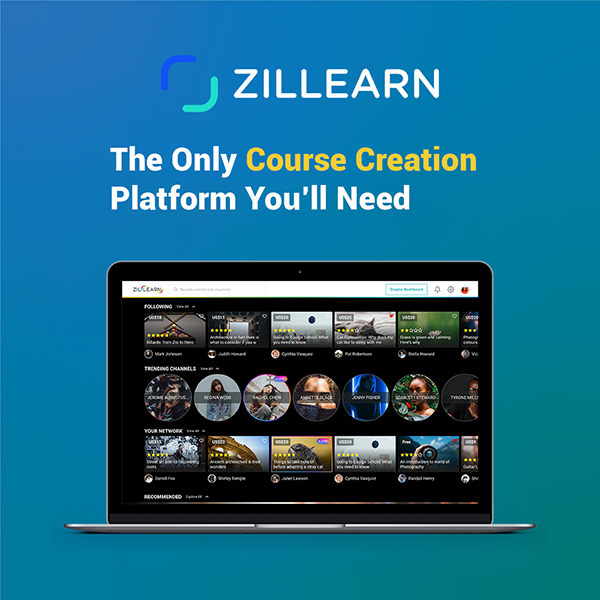The future of jobs is on the minds of workers and organizations alike as Industry 4.0 takes hold.
According to the World Economic Forum, as technology and digitalization are adopted more and more, in-demand skills across jobs will change as we head towards 2025. Skills gaps will continue to be high.
Fresh graduates and mid-career professionals are to upskilling and reskilling to meet the job demands of today. The responsibility of workplace learning also falls on businesses to maintain a future-ready workforce.

Kenneth Tan is an experienced educator having spent 25 years in education and training, with an added focus on educational technology, curriculum design, and development.
Kenneth’s passion is leveraging educational technology to support and enhance learning. He had spent six years as an Assistant Director at Singapore’s Institute for Adult Learning (IAL) advocating the innovative and effective implementation of educational technology in the training and adult education sector.
He has guided educational institutions and enterprises to appreciate how technology can transform, how learning can be imagined, designed, delivered, supported, and evaluated.
With an open mind on different learning theories and instructional methodologies, Kenneth is pragmatically grounded in his education philosophy. He believes that we all have the innate ability to learn. The modern educator needs to know how to utilize technology to help each individual achieve a more positive learning experience.
Kenneth sat down with LEARNTech Asia and shared six themes for successful workplace learning design to upskill and reskill the workforce and create happy, productive learners at the same time.
An educator’s heart
I’ve been an educator for 25 years. Deep in the heart, it’s an educator’s heart. The blood that pumps is about education. It’s about learning. That’s where my passion lies. I’ve worn many hats in the education and training sector. I’ve been a teacher, I’ve been an instructor, I’ve been a curriculum developer, I’ve been an educational technology advocate. I’ve also been a student — the person on the receiving end saying, “Well, this lesson was good,” or “That lesson didn’t work.”
I’ve had interesting opportunities where I have spoken with my students, 10 years after I last taught them. One came up to me and said, “Ah, you know, that lesson that you covered with us? I love that phrase that you used, that ‘Religion is the opium of the people.’”
I don’t even remember saying that to them. But they remembered it. And it tells us that sometimes it’s not the subject matter itself that attracts people to what’s important. That one encounter had a very large impact on the way I’ve always viewed learning and training.
It tells us that each one of us walks away from a lesson with something that just connects. Something that resonates. And when it resonates with them, it holds true in their heart, in their mind. That’s what’s going to shape their beliefs. It’s going to shift their attitudes.
1. Holistic learning & technology
As an educator, I’ve seen the pandemic force us to reevaluate the traditional belief that face-to-face instruction is the best way. Actually, I think that’s not wrong. But I think we can also begin to see a shift away from face-to-face. And it evolves the way we think about learning individually, as an organization, or as a training institution. And how we evaluate the effectiveness of the learning.
We have been forced today to consider the impact of technology to support learning. In the past, whenever we had in the classroom or in the training environment, we had a face-to-face course. And we had an e-learning component.
We did evaluations quite differently. We said, “How did you find the face to face instruction?” And then another section, “How did you find the e-learning instruction?” We saw them as two separate components. And sometimes the evaluation was, “We liked the face to face because of the interactions,” or “the e-learning wasn’t that great, because we had problems with bandwidth. And we had problems with accessing the content. It was slow.”
We saw them as two separate things. We need to begin to look at learning as a holistic and integrated. We learn in the real world in many different ways.
If today, somebody were to ask me, “What is the difference between the Internet of Things and the Internet of Everything?” Do you know I posed this question once to a group? And the first thing they did was they picked up their phone. And they started typing away in Google, trying to find the answer. So that’s a reality, isn’t it? When we are faced with a question that we don’t know the answer to, we don’t pick up the phone and call a friend. We don’t turn to the person next to us. We go straight to technology.
So in many ways, we need to recognize that technology is a very natural way in which we learn. And I think if we start to now recognize that way of learning, that way of leveraging technology, when we are forced to do it, is an increasingly natural way that we are learning because we are so immersed with the technology in every part of our life.
Today, we can start to see the efficacies of technology impacting learning. We need to give ourselves, instructors, instructional designers, curriculum developers, course administrators an opportunity to prove the value of technology enabled, technology assisted, technology empowered learning. We need to be able to embrace the change. The pandemic situation together with the technology forced us to reevaluate learning in a different way.
When the attitudes start to change, it’s going to be reflected in behavior. In the workplace, that’s what’s going to happen, isn’t it? You can force a change in behavior. But we can advocate a change in behavior because we change attitudes. So if we can get to the point where we allow people to spend a little bit more time thinking about, “Why do I need to do this in this way,” and they can take the time to appreciate the learning and doesn’t feel “I am coerced into learning this or to do it in this way,” because the group says so.
Individually, I am more inclined to accept the change in position — a change in direction. I think we’re going to find people’s attitudes are changing because they themselves see that it’s changed. And not perhaps so much from a kind of external coercion of sorts and external pressure coming from their peers to say, “This is why we need to do it.”
2. Microlearning at the workplace
I go into a course and it says, “Your learning objectives are ABCDE.” I already know ABCD. I only don’t know E. So when I’ve taken the whole course it says, “Well done. You have learned ABCDE.”
I’ve learned E but I already knew ABCD. And I’ve just invested time and money and energy, learning or relearning something that I already know.
Do I need to take a whole course just in order to learn a new skill — because the program is designed that way — so that I can get a certification?
Kenneth Tan, Education Technologist
Is that right or wrong? It’s difficult to say. Because in many ways, relearning the content reinforces learning. But in other ways, that’s not what I really want. I just want an incremental piece of learning.
I think as we start to look at modern learning for the workplace, we need to recognize that different people are going to learn differently. We can continue to have more comprehensive programs for people who like structure. We can continue to have them because there are people who need to see how one piece is linked to another piece. And therefore they need to have that whole sense of flow completeness.
And there are others who say, “Don’t waste my time. I only want to know ‘A’ because that’s what I need for my workplace.”
When we start to think of learning new skills in smaller bite-sized chunks, we’re really thinking about, “How can we make learning design more nimble? How can we make it such that we can create incremental learning and small bite-sized chunks?”
The advantage to the company, or to the training organization, trying to skill is, “I can do it quicker.” Because now it’s a small bite-sized thing. The turnaround from the time we say, “This is skill we need,” we’ll activate our resources, plan for it, find the right instructional models to apply the content, do the videos or whatever content material that we want, look for the assessment that needs to evaluate the person who’s done it. And we’re done.
Can we scale it? Of course we can. As more and more things come associated with it, we can slowly add to it. And that addition will also help the learner scaffold: “This is where I know, this is what I know.”
The next logical step is this new skill. If I can help you see the connection I can make that skip I can make that move a lot more easily. And I think that’s pretty much what Lev Vygotsky talks about in his principle of The Zone of Proximal Development. So when we start to think about learning things that are just one step beyond what we are comfortable with what we know, we learn so much more effectively.
3. Workplace learning needs to be practical
We think about learning skills that are more precise, that are more specific. In particular, if I can help you see how they’re relevant to you today, to your job, to how you can get the promotion, how I can put a smile on your face because you feel that you are able to do things that you want to know how to do and then makes you happier. That’s great, isn’t it? I think that’s the whole point behind learning.
Learning has to become a lot more practical. At the end of the day, can you apply this skill? Can you tweak it to suit a changing context in an environment? That is the true art of learning. So we would then be able to be adaptable. And when we can start to see that we can adapt something, then we know that we have learned it well. We learn basics, but then we have to learn the next level, which is tweaking the basics to get better at what we are doing.
Nobody learns how to play tennis in one lesson. You can learn to watch tennis and know that there is a serve. There is a forehand and backhand and volley, and underspin and topspin. But you don’t learn them all at one time. You learn one skill at a time. You build on that skill to move to the next skill. And eventually, you start to become better at what you do.
That really is the notion of how we should be packaging our learning as well. So yes, you can take an entire course on tennis. But at the same time, you can also specialize in just learning how to improve your serve, because that’s what you’re really bad at and not take the entire coaching program. Just learn one skill and not get inundated with all the rest of the things that you don’t need.
4. Formal & informal workplace learning
A friend of mine and I were having coffee. We had this conversation about how important is formalized training and learning? The whole conversation started when we were talking about the difference between learning and studying.
Is there a difference between learning and studying? I like learning. I’m not a fan of studying. If my teachers are watching this video — I didn’t really like studying. I like the learning part of it, not the studying part. And I think many of us can probably relate.
We know in the 70:20:10 principle of how people learn, 70% of what we learn comes from our experience from whatever happens around us. When we go to the watercooler and we have a conversation, when I come up to you and say, “Hey man, how the heck did you do that?” And you say, “Oh, that’s simple. Let me show you.” And I’m standing there with you and watching you do it. And you correct me as I do it.
That is how we learn 70% of the time — informal learning. That is really about learning when we need to learn it. That is how we are most effective in our learning process. And yet, in many ways we can’t track and we can’t really monitor that.
The next piece is what we could call non-formal learning. Non-formal learning is where you have within your organization, within your school, potentially you have groups, you have collaborations for projects, and so forth.
And in the course of those projects, we are forced to come up with a solution to a problem that the company is facing. Revamp the product that we have and create a new product. We talk, we discuss, we learn from one another. What strengths do you bring to the table? I didn’t know you could do that. And what you can do, I can complement. And I can bring in new information to that table.
And collectively, collaboratively, we create new things. And through that creation, we are learning, we are learning real things, for real products for real outcomes. That’s a non-formal learning part of it. Together with that non-formal part of that learning, there are other softer skills that we’re also learning. How to manage expectations, how to manage people in groups, how to manage time, how to manage resources. Those things are not factored in as learning objectives and outcomes.
But because of the real world setting that we are put in, we are learning all these things. And that’s 20% of how we are learning. So we’ve got informal learning — 70% the bulk of how we learn in the real world unstructured. We never even thought about it because it came about naturally. It came about because it was necessary.
Twenty percent comes from the non-formal environment, where we were put into groups. Where we had activities. They were organized, but it wasn’t really formulated around learning objectives and outcomes. But we learned, and we learned important things.
So the remaining 10% of what we learn or how we learn comes from formal learning, where learning objectives are — imposed upon us? I shudder to use that word. Because I know there are instructors who would say, “No, no, no, no, they’re good for you.” A doctor imposes medication on you because it’s good for you whether you like it or not. But that’s coming back to the whole discussion about learning and studying, isn’t it?
So sometimes we are told of the importance. But it has to be timely. It has to resonate with us. Ten percent of the time is where 90% of our learning budget goes. That’s where we’re tracking how much have you learned, how many hours of training have you put in this year, how many courses have you passed, how many certifications have you received.
And all these little pieces of information account for what we tend to see as the obsession of learning. So I would imagine, perhaps, it’s a good time for us to take a step back. Maybe we need to try and make the 10% more humanized, more focused on learning, then on studying. Maybe we need to start to look at learning from a perspective where the 10% doesn’t really feel like the 10%. That the 10% is beginning to feel more like the 70%.
How do we do that? The moment we start to think about learning in a more structured environment, we think formal learning. But what if I had online content that gives you more flexibility in terms of your time, in terms of how much you want to learn before you decide you want to learn anymore?
So you decide. This course will try and teach you objective A, B and C. You decide, “I only want A and B. I take the course for A and B and I stop.” I might not get the certification but it doesn’t mean I haven’t learned A and B.
And as a result of that, maybe I’m a happier learner. A happier learner is a more productive person in the workplace.

5. Assessment & evaluation in workplace learning
Well, let’s come back to the fundamentals. Why are we so obsessed about assessment? Because in many ways, from an organizational point of view, the assessment is proof that the money has been well spent. The assessment is proof that you have learned what you need to learn. The assessment is proof to the individual that in some way, he can quantify and qualify that he has learned something.
But if you go back in time, how we learn to evolve as individuals is to learn to get better at what we do. It really wasn’t about certifications and qualifications. It was about need. It was about drive.
Certification is still an important piece, because it forces us to think about the design of our courses. It forces us to keep focus on what we’re trying to ensure that the person walks away from the course with.
In the Kirkpatrick Model of Evaluation of Learning, he had the first level of reaction. So how do we evaluate? “Did you enjoy the course? Was it fun? Was it good for you? Would you recommend it to somebody else?” And you could then read it and say, “Yes, it was brilliant. I totally enjoyed it.” Did you learn very much what I learned? What did you learn? “I learned enough.” That’s my reaction.
So they say that’s at its most base level in the evaluation ladder. Then we went to an assessment of learning. So this was objective ABCD. Prove to me that you can do ABCD. So, multiple choice questions, assessment submissions with a rubric to say that you have met ABC and D. And therefore I can say, “Yes, I have met them adequately, objectively.” And this is the outcome that I have.
The third level is to look at application. And I think this is where we start to see the real world quality of learning outcomes that you can now not just say, “I know what it means. I know how to do it.”
But now I need to be able to do it on a regular basis. I need to be able to not just do it for myself, but to be able to teach other people and when the environment changes, the circumstance changes, the context changes, I can adapt the learning that I have to make it something that is more internalized, and it’s more productive.
The last level of learning evaluation is to look at the level of the return on investment of business. So all the things that I’ve learned: How has that impacted business outcomes? Have I been able to improve productivity? Have I been able to improve sales and sales revenues? Have I been able to boost the overall morale of the institution or organization?
The challenge then is how do we isolate just that one block of learning and its impact on the larger return on investment. I think that’s going to be a really tricky question. And that’s the one that is what we’re all eager to see that the training has led to better outcomes for the business and for the organization.
Translated into a more pragmatic way, it would suggest that assessment should be done in the workplace. And it’s your boss who should evaluate you. So your boss sent you for a course. Because he has attended the course before. Because he knows what the course is about. He reinforces the language that is used in the training. He re-emphasizes the steps that you have learned. And he wants to see you perform at the workplace in the real world. And then he evaluates you at the end of the year and says, “Good job, well done. I have seen how this course has benefited you.”
When we start to see that kind of real-world evaluation, I think people will start to see the relevance and importance of training. It then becomes easier for them to start looking for the next piece of training because the training shows direct relevance to the performance and the improvement. That improvement, hopefully, will also be reflected in a better performance review, bonuses, promotions, acknowledgment, and recognition.
6. Reimagining online learning design
The challenge in the past with online learning is we have always designed online learning very differently from face to face. We hear a good amount of feedback that says that online learning is very sanitized. It’s taken by some instructional designer and it’s made very formalized. It sometimes just doesn’t resonate with people.
Today, if you look at YouTube, you’ve got a 14-year-old kid teaching a 50-year-old how to do a pivot table in Excel. A 14-year-old who has no instructional training whatsoever. And yet, he can teach a 50-year-old how to do a pivot table in Excel, through the use of video instruction because it’s driven by the fact that somebody needs to learn.
So perhaps we need to start to think about creating video instruction. Why? Because that interaction, what you’re now experiencing, for example, me talking to you, that whole exposure kind of evokes a lot more feeling. You hear. You see. The more senses that are involved, even if it gets to your emotional side of the house, it challenges your beliefs. It challenges your principles to how learning can happen.
I think that kind of resonance will help you relate to the content a lot better. The redesigning of learning to become much more nimble, to become a lot more concise, to be things that you could stack as you learn, to scaffold. Learn one piece, learn the next associated piece, learn the next associated piece, then take a step back and reflect on all that you have learned to piece them together.
And then evaluate yourself as an individual. How far have I grown? How or much have I learned? How much have I become more comfortable with what I now need to do in the workplace?
In case you missed it, watch a recording of Kenneth Tan moderating a LEARNTech Asia webinar on human capital building in the 21st century.





